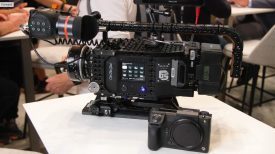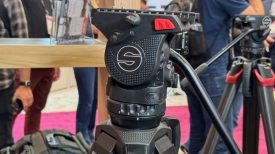The DJI Osmo X3 gimbal camera has begun to ship and B&H delivered mine yesterday. The Osmo’s X3 camera is a self-contained ball-shaped 4K camera mounted on a three-axis gimbal. It is essentially the same as the one on the DJI Inspire drone, but with the lens optimised for closer focus distances.
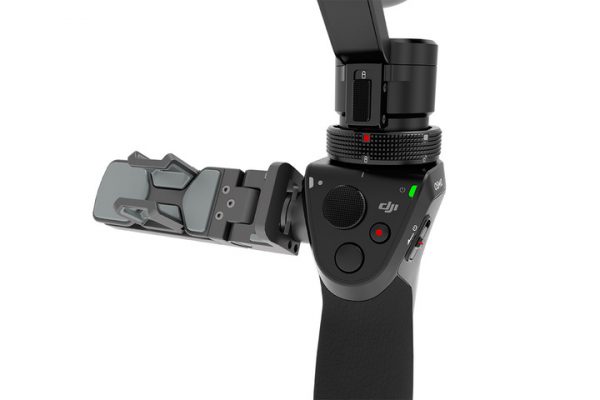
The Osmo is controlled and monitored from your smartphone. In fact, you can’t even turn it on until you’ve connected the camera with the DJI Go app on your phone and registered over the internet. The camera comes with an elegant rosette-mounted phone holder that swivels and adjusts for different-sized phones. However with an auxiliary Mophie battery pack fitted my iPhone was too thick to fit in the holder. The phone connects over WiFi so it doesn’t have to be in the holder to work.
It comes in a well-made fitted case that looks like it should have a musical instrument in it. The Osmo feels like a high-quality tool. It’s fairly light. The battery charges in an hour on the included charger and fits into the base of the handle.
I was keen to test it out so I shot some hurried footage in New York between assignments. The camera was set in auto and framerate was 60 fps in 1080 HD. The image seen in the video above is with the default settings as the camera comes out of the box. The auto exposure seems to be ok given enough light. Footage shot in the darkness of Penn Station sent the ISO up to the max, 3200, but it was still underexposed and a little noisy. It has a 20mm-equivalent 3.6mm f/2.8 lens with a 94-degree field of view. It is a corrected lens and not a fisheye, so straight lines stay pretty straight with this lens.
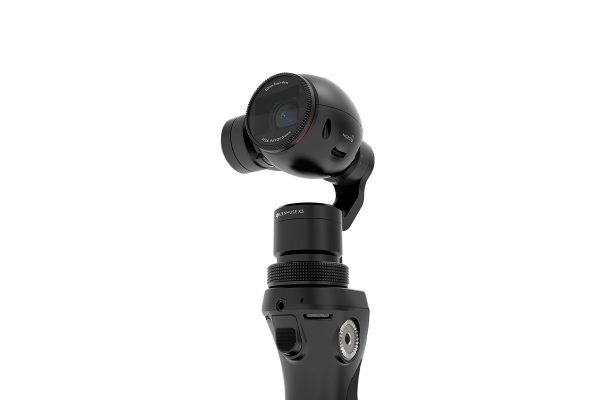
The controls are set up on the handle for a right-handed person. There’s a thumbpad joystick on the back that lets you pan and tilt the camera and a trigger switch on the front that has different functions depending on how many times you press it. I quickly got used to a double-click to return the camera to the straight-ahead and level. By your thumb on the handgrip there is a small movie record button and below that a still-photo shutter release.
There’s a 3.5mm audio jack on the front of the handle – and you’ll need it. The gimbal is audibly noisy when in operation and the internal mic picks this up. The audio in the video above was recorded using an external mic plugged into the Osmo.
I was rushing to get somewhere and made no attempt to be smooth while shooting. Despite this, the footage mostly looks OK. I think more practice will pay off to smooth things out. I was shooting against the light and the highlights and shadow detail were pretty good for a tiny camera. That said I see some aliasing in the fine details of the picture.
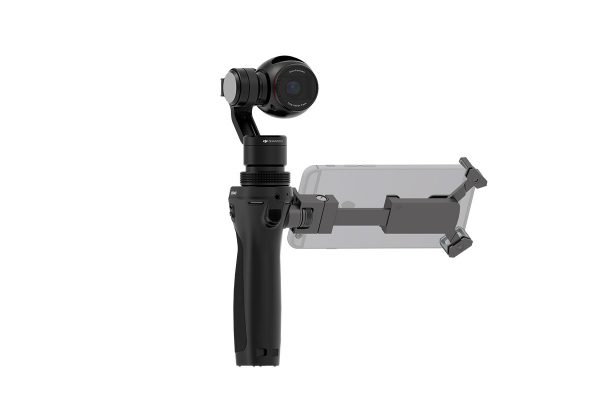
I haven’t quite learned how to keep the horizon level with it yet, although there is an adjustment for it on the app. Out of the box it seems to want to make the world lean a little when you’re moving around. One time it switched the video to vertical – unintentionally – and I had to hit the trigger to reset it. I don’t know what I did to switch it to vertical video – it was disconcerting!
I haven’t tested out the manual controls and the more cinematic shooting options yet. I suspect I will need some kind of ND filter much of the time to keep the shutter speed at 1/50th. That testing comes next.
So far I can say that I already see this as a usable budget alternative to a bigger gimbal for your camera – especially for video journalism type work. For the $649 retail price it certainly looks like a good buy.



